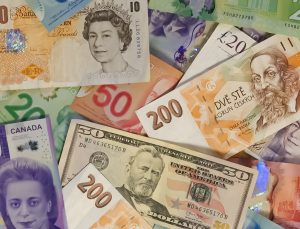Forex trading involves the buying and selling of currencies in order to make a profit. One of the most important aspects of successful forex trading is the ability to spot trends. Trends are the general direction in which the market is moving and can be either bullish (upward) or bearish (downward). Spotting trends in forex is crucial because it helps traders make informed decisions about when to enter or exit a trade. In this article, we will discuss how to spot trends in forex.
1. Use Technical Analysis
Technical analysis involves analyzing price charts to identify patterns and trends. Traders use various technical indicators such as moving averages, Bollinger bands, and MACD to identify potential trends. Moving averages are one of the most commonly used technical indicators. A moving average is a line that represents the average price of a currency pair over a specific period of time. Traders use moving averages to identify the direction of the trend. If the moving average is sloping upwards, it indicates a bullish trend, while a downward sloping moving average indicates a bearish trend.
2. Follow the News
Economic and political news can have a significant impact on the forex market. News releases such as interest rate decisions, GDP reports, and employment data can cause significant volatility in the market. Traders should keep an eye on the news and use it to identify potential trends. For example, if the Federal Reserve announces an interest rate hike, it could indicate a bullish trend for the US dollar. Similarly, if there is political instability in a country, it could lead to a bearish trend for that country’s currency.
3. Analyze Market Sentiment
Market sentiment refers to the overall feeling or mood of traders towards a particular currency pair. Traders can use market sentiment to identify potential trends. For example, if the majority of traders are bullish on a currency pair, it could indicate a bullish trend. Traders can use various tools to analyze market sentiment such as social media sentiment analysis tools or sentiment indicators.
4. Use Price Action
Price action involves analyzing the price movements of a currency pair to identify potential trends. Traders can use various price action techniques such as support and resistance levels, trend lines, and chart patterns to identify potential trends. Support and resistance levels are price levels where the market has previously reversed direction. Traders can use these levels to identify potential trend reversals. Trend lines are lines that connect the highs or lows of a currency pair. Traders use trend lines to identify potential trends. Chart patterns such as head and shoulders, triangles, and double tops can also be used to identify potential trends.
5. Use Fundamental Analysis
Fundamental analysis involves analyzing the economic, political, and social factors that affect the forex market. Traders can use fundamental analysis to identify potential trends. For example, if a country’s economy is growing at a faster rate than expected, it could lead to a bullish trend for that country’s currency. Similarly, if there is political instability in a country, it could lead to a bearish trend for that country’s currency.
In conclusion, spotting trends in forex is crucial for successful trading. Traders can use various techniques such as technical analysis, following the news, analyzing market sentiment, using price action, and fundamental analysis to identify potential trends. However, it is important to remember that no method is foolproof, and traders should always use multiple techniques to confirm potential trends before entering a trade.






